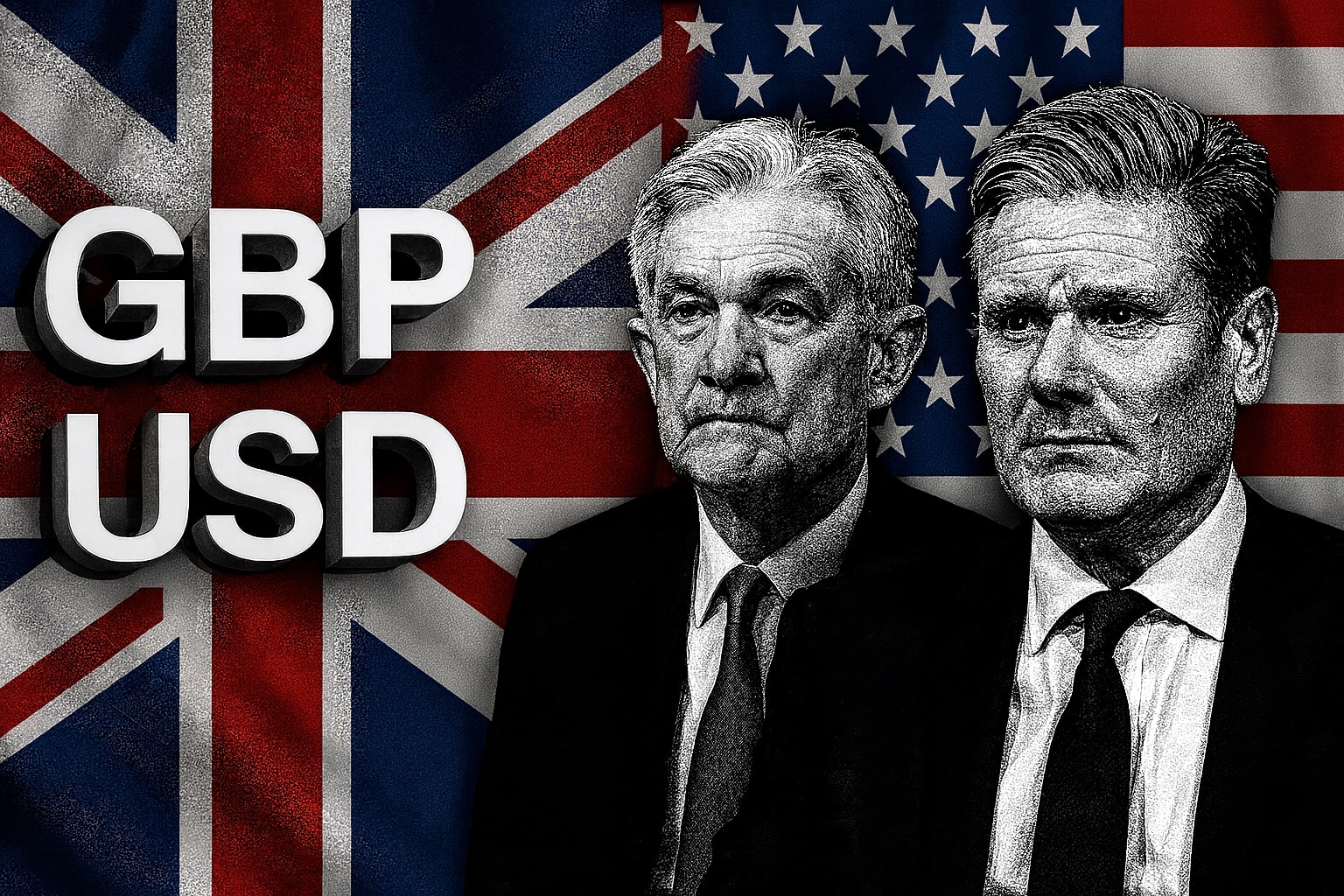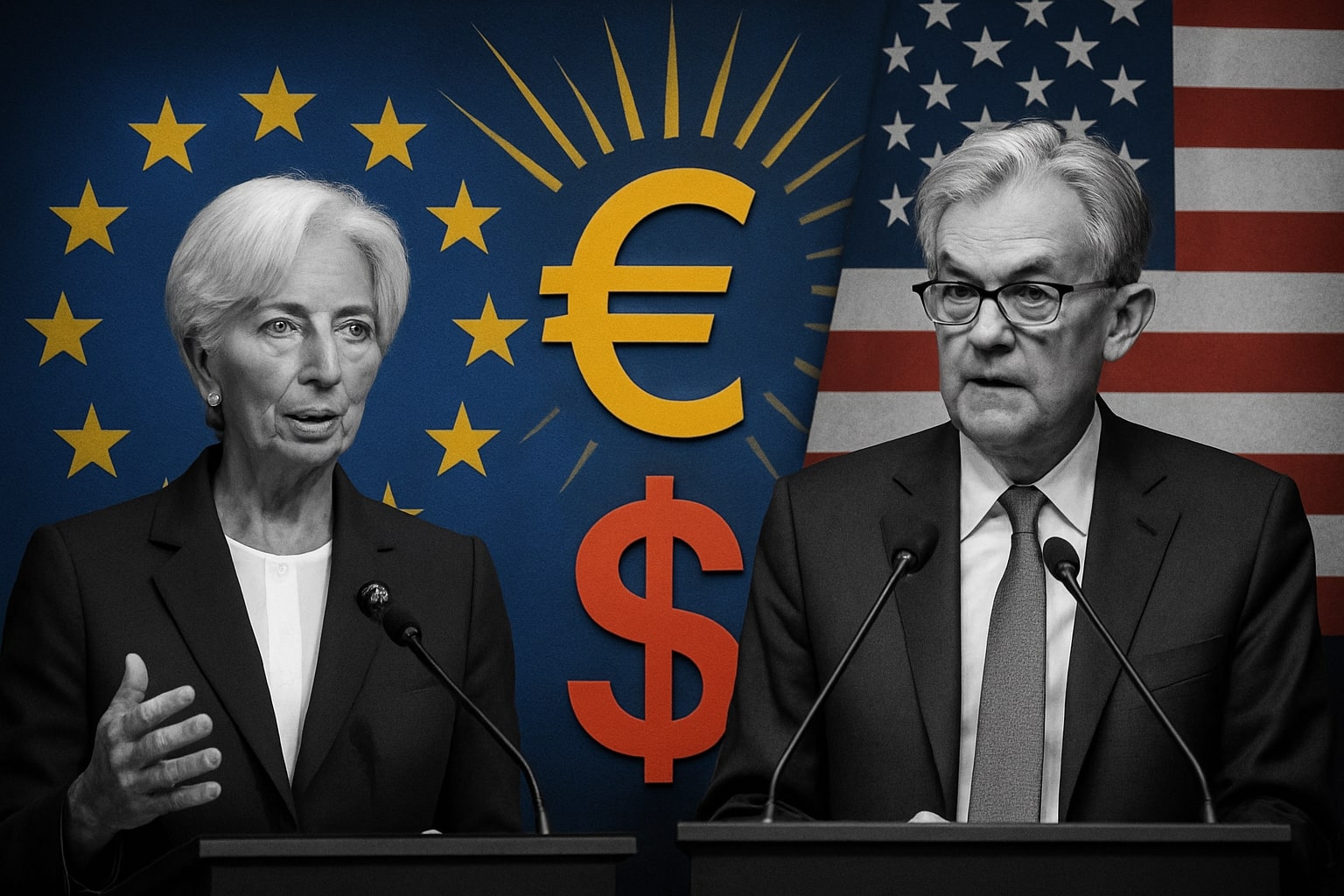
GBP/USD Price Forecast: Sterling Balances at 1.35 Ahead of Fed Jobs Data
Dollar Strength, UK Macro Headwinds, and Technical Levels Shape GBP/USD Outlook | That's TradingNEWS
GBP/USD Price Battles Between Fed Policy Shifts and UK Economic Fragility
The GBP/USD pair has been locked in volatile trading, with the British pound slipping toward 1.3419 midweek before rebounding to close at 1.3504, highlighting how dependent the currency remains on shifting U.S. macroeconomic data and central bank guidance. The week began under pressure as markets discounted overly dovish interpretations of the Federal Reserve’s September cut, realizing that no follow-up cut in October was guaranteed. That recognition drove GBP/USD into a selloff until Wednesday’s low. But on Thursday, stronger-than-expected U.S. GDP figures shifted sentiment again, pushing GBP/USD toward 1.3530, though still short of the prior week’s 1.3547 high. The reversal did not last long as Friday’s PCE inflation data stabilized expectations, causing a dip to 1.3448 before buyers returned. By the weekend, sterling was holding above 1.3500, albeit still below the previous week’s close, revealing the constant oscillation between optimism and concern.
Federal Reserve and U.S. Data Keep GBP/USD on Edge
The U.S. macro calendar remains the single biggest driver of GBP/USD moves. GDP growth beating consensus at 2.4% while inflation stayed in check encouraged temporary sterling strength, but the more important PCE data on Friday dragged sentiment back down, reminding investors that the Fed is in no hurry to adjust policy aggressively. Powell has reiterated that policy will be guided by evolving data, particularly inflation, leaving GBP/USD vulnerable to each release. This coming week, the Non-Farm Payrolls data looms large, with markets primed to react if employment shows weakness. A softer jobs print could trigger GBP/USD buying back toward 1.3620, while a strong release may reinforce dollar strength, dragging the pair closer to 1.3460. For now, the speculative equilibrium sits between 1.3470 and 1.3530, but traders should not expect that band to last as volatility picks up again with the return of U.S. institutional flows after the holiday.
Technical Structure of GBP/USD Points to Fragile Support
Technically, GBP/USD is carving a series of fragile recoveries. Earlier this year the pair defended 1.2710 repeatedly, bouncing with higher lows and breaking through the 50-day SMA at 1.2757. The latest rebound from 1.2709 earlier in April pushed GBP/USD back toward 1.3207, but momentum has since waned. Recent price action confirms resistance around 1.2900 to 1.2910 as a ceiling, while the current near-term band between 1.3462 and 1.3620 marks the battleground for traders. If GBP/USD fails to hold above 1.3460, it risks retesting 1.3419 and potentially sliding toward 1.3330, where deeper Fibonacci levels lie. Conversely, a move back through 1.3530 opens the door to 1.3620, and only a sustained breakout above that would validate a bullish shift. RSI readings have stayed neutral, while MACD signals show narrowing spreads, indicating momentum is yet to confirm a decisive trend. Day traders will need to watch the 1.3500 psychological line closely this week, as its defense or breach could dictate the next major move.
UK Fundamentals and Political Backdrop Add Pressure
While the U.S. dictates immediate swings, the pound is also tethered to UK macro risks. Growth remains tepid, inflation has cooled but not decisively enough for the Bank of England to relax, and political noise around fiscal policy continues to weigh on sentiment. Markets are watching whether UK fiscal stimulus will materialize to support growth or if austerity rhetoric will return. Without clearer direction from the BoE, sterling will struggle to rally on domestic drivers alone. UK CPI has stabilized, but wage growth and sticky service inflation remain elevated. This leaves the BoE caught between fighting residual inflation and addressing sluggish growth, a balance that limits its ability to generate strong GBP/USD upside independent of U.S. data.
Global Trade Policy and GBP/USD Spillovers
The Trump administration’s evolving tariff stance also matters for GBP/USD. Reciprocal tariff pauses, such as the 90-day halt announced in April, provided breathing room for sterling, but threats of further duties on China or Europe quickly spill over into USD strength. For GBP/USD, this trade backdrop adds another dimension of uncertainty, especially when combined with UK-EU post-Brexit trade frictions. If tariffs escalate, the dollar tends to benefit as a safe haven, leaving sterling weaker by default. At the same time, any easing of trade tensions can allow GBP/USD to ride global risk appetite higher. Investors remain hypersensitive to headlines, which can move the pair by 50–100 pips within hours.
Verdict on GBP/USD: Buy, Sell, or Hold
With GBP/USD trading near 1.3500, the outlook remains finely balanced. Support sits at 1.3460, resistance near 1.3530, and the speculative range stretches toward 1.3620 on the upside and 1.3419 on the downside. Fundamentally, the pair faces persistent headwinds from U.S. data strength and the Fed’s cautious stance, while UK macro conditions do little to inspire conviction. However, the potential for weaker U.S. jobs data or a dovish Fed pivot later in the year creates a bullish setup if sterling can hold above support. For now, GBP/USD is best rated as a Hold, with tactical opportunities to Buy near 1.3460 and Sell into strength above 1.3530 unless the pair decisively breaks the 1.3620 resistance, which would validate a larger bullish recovery.
That's TradingNEWS
Read More
-
PPA ETF at $154: Can This Defense ETF Keep Beating ITA and SPY?
14.12.2025 · TradingNEWS ArchiveStocks
-
XRP ETFs XRPI and XRPR Pull In $975M While XRP-USD Fights To Hold $2
14.12.2025 · TradingNEWS ArchiveCrypto
-
Natural Gas Price Forecast: NG=F Hits $4.11 As Warm Winter Outlook Puts $3.913 Support At Risk
14.12.2025 · TradingNEWS ArchiveCommodities
-
USD/JPY Price Forecast - Dollar to Yen Can BoJ’s 0.75% Shock Break The 155–158 Range?
14.12.2025 · TradingNEWS ArchiveForex



















